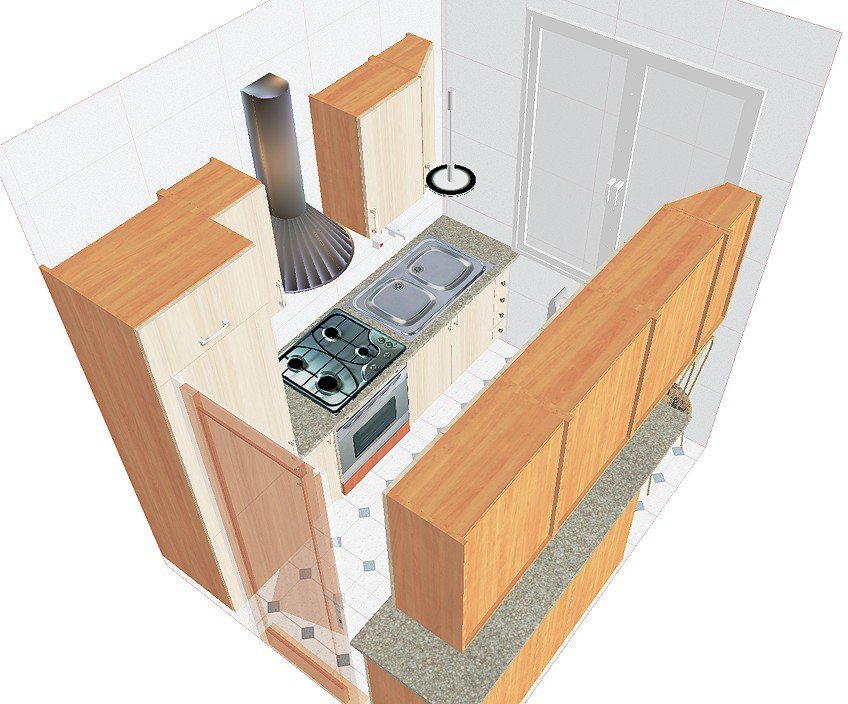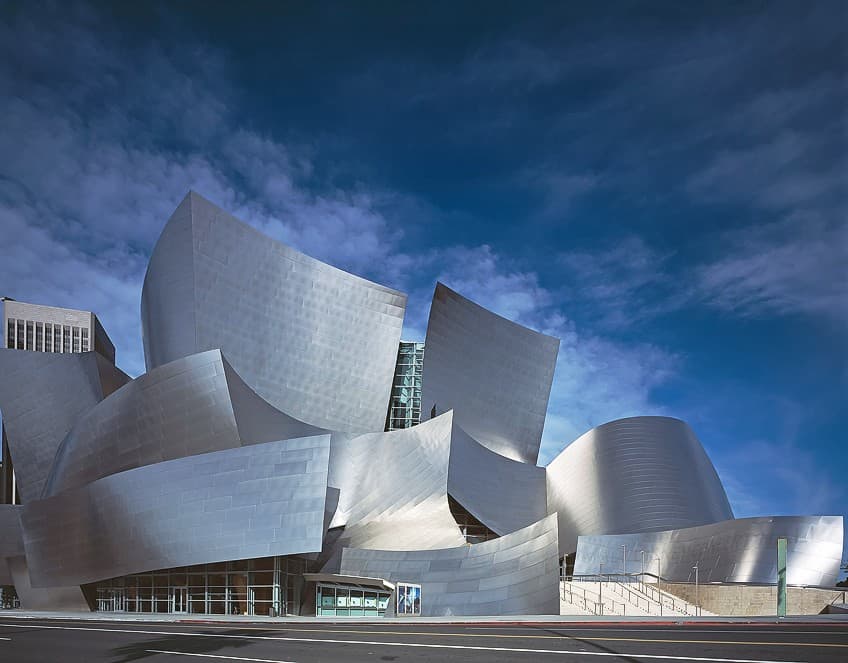Contemporary Architecture – Where Form Meets Function
What is contemporary architecture? That is what this article will attempt to answer and discuss. There are many different forms of contemporary architecture, and we will look at a number of those different styles while looking at their characteristics and what sets them apart from other styles of contemporary architecture. Let’s get started on our look at contemporary architecture!
Table of Contents
- 1 A Look at Contemporary Architecture
- 1.1 Blobitecture
- 1.2 Critical Regionalism
- 1.3 Computer-Aided Architectural Design
- 1.4 Conceptual Architecture
- 1.5 Digital Architecture
- 1.6 Digital Morphogenesis
- 1.7 Deconstructivist Architecture
- 1.8 Desert Mid-Century Modernism
- 1.9 High-Tech Architecture
- 1.10 Minimalist Architecture
- 1.11 Metabolist Architecture
- 1.12 Organic Architecture
- 1.13 Postmodernist Architecture
- 1.14 Parametricism Architecture
- 2 Frequently Asked Questions
A Look at Contemporary Architecture
Contemporary architecture is a broad label that encompasses any architecture that is in use in the 21st century, although some contemporary styles of architecture did originate in the 20th century. This also means that there is no singular style that can be termed “contemporary architecture” and there are instead a number of different styles. In fact, there are far more than those that are listed below, but we will examine a number of them in the section below. Each of these styles originated in a different period and for different reasons, and so they have been placed in alphabetical order for the sake of simplicity.
So, let’s have a look at some of these modern architecture styles.
Blobitecture
Blobitecture has one of the most adorable names in the entire field of architecture and is also one of the names that best reflects what it is. Unlike forms of architecture like Brutalism, which requires elaboration on the name, it is quite obvious to see what gives blobitecture its name: it’s the design of structures that mimic blob-like structures. The idea behind this general idea is to a kind of organic style of contemporary architecture that makes use of an amoeba-shaped form of building.
This particular style’s name initially came from a derogatory place, but it has since become the general term that is used.
These kinds of structures often need to be designed around more contemporary methods that make use of computer-assisted design because more traditional methods of producing architecture of this variety become impossible. For instance, the inherently curved and organic nature of the structures eschews traditional forms of support structures, and it can often be difficult or even impossible for an unassisted human to design a structure that makes use of such curved designs without leading to structural issues.

Critical Regionalism
In the history of architecture, there has often been an aim toward a certain internationalist mentality, especially ever since the beginning of the 20th century. This can be seen in some of the early Modern styles, such as Bauhaus architecture. However, Critical Regionalism is considered to be a contemporary style of architecture that serves as something of a counterpoint to that particular mentality. It goes against the lack of personalized identity that became the standard in the International Style but also simultaneously rejects the kinds of whimsical and playful designs that could be found in Postmodern architecture. It can be seen as something of a mediation point between these two major aspects of design.
On one hand, it makes use of a more individual style, but also does so in a far more serious capacity than Postmodern architecture.
This particular idea attained its name in 1981 with a slightly different meaning, but that meaning has come to be oriented around the present concept, which entails an attempt at striving towards a regional style that is somewhat in keeping with vernacular architectural standards. This means that Critical Regionalism is an attempt at adhering to the region in which a structure is designed and constructed, and this involves the use of localized materials, the mixed-use of design elements from both traditional and modern forms of architecture, a certain attempt at a site-specific style, and it also often attempts to move towards a more sustainable approach towards the local environment.
Computer-Aided Architectural Design
Computer-aided architecture is one of those more catchall terms that refers to a number of different ways in which contemporary architecture can be attained and achieved. There are a number of different contemporary architectural styles that make use of this form of design, such as the already mentioned blobitecture. The idea, in general, behind this concept is that humans are often incapable of performing certain kinds of designs, and so computer simulations are able to assist in the planning and testing of structures using different materials, support structures, and so on.
The use of computers was initially introduced as a simple means of increasing the productivity of architects, but these programs have since become an immensely necessary tool.
While certain forms of architecture can still be designed through more traditional means, the advent of the digital age means that practically every contemporary architect, especially those operating in the major firms, will make use of computer-aided architectural design programs. While a contemporary house style may not necessarily require the assistance of a computer, the same is generally not the case for larger structures, such as skyscrapers. This is, therefore, more of a method than a style all on its own, but it has led to some fascinating developments in the history of contemporary architecture.

Conceptual Architecture
This form of contemporary style architecture is quite a fascinating one because of its general reduction in the kind of specificity that tends to come with architectural design. In more traditional architecture, an architect needs to be immensely precise and design structures that will be able to stand, be built, and so on. However, in the case of conceptual architecture, these kinds of specificities tend to be of far less importance. Instead of there being a fundamental requirement towards specificity, there is instead a focus on conceptual ideas and general guidelines.
This particular architectural style is often more geared around an abstract idea on which a structure can be later constructed.
It is intended as a broader way of operating and can often be used as a means of preparing the kind of structure that will later be designed on a more technical level. For instance, this could entail the proposal of a new kind of skyscraper that makes use of certain materials or techniques that may not be all that common, and it is intended as a means of selling possible stakeholders on what could be accomplished. However, conceptual architectural designs, in their more abstract capacity, do ultimately require a move towards the more technical before construction can actually begin.
Digital Architecture
This particular form of contemporary architecture is not the same as computer-aided design even though the name may appear somewhat similar. Instead, this architectural style is an emerging field and some of the specifics of it have not been completely determined, and so there is still significant work going on in this particular field. However, it does entail the use of digital technologies within the design of structures. And these structures are generally digital in their presentation too.
To simplify this, think of the kind of structures that may exist within a video game.
These designs do not need to conform to the realities of the real world because they reside within a wholly digital space that is quite unlike anything else that has ever existed. This kind of architecture can be found in certain website designs, attempts at metaverse integration, and more VR-oriented chatroom designs, such as the popular chatroom-style game VR Chat. That which can be created in these spaces is utterly unique and can either be an emulation of what already exists, or it can serve as something wholly new and unique.

Digital Morphogenesis
This oddly named instance of contemporary style architecture requires computer-aided design as it entails the use of generative technology that leads to what is known as morphogenesis. These more organically designed structures allow for integrated detail that is often best seen in more biological beings, and so this kind of biological proclivity translates into architectural designs that can be strange and unusual to the eye that is used to seeing more traditional architectural designs.
This particular style exists outside of architecture too and is a relatively recent field that can be found in a number of artistic mediums.
The name itself, when broken down, explains the idea in more basic terms, as the prefix Morpho- means a shape of some kind while the suffix -genesis is used to refer to something being created. The term is then supplemented with the term “Digital”, meaning a shape of some kind that is created through digital means. The name is intentionally broad, and as an emerging field, there is still much that can be done with this form of contemporary architecture.
Deconstructivist Architecture
Deconstructionism is perhaps one of the best-known forms of Postmodern architecture and is therefore one of the premier forms of contemporary architecture currently in use. This particular style originated in the 1980s and was heavily inspired by Constructivist architecture as well as the ideas of the French semiotician and philosopher Jacques Derrida. The general idea behind this particular form of architecture is that it serves as an attempt to produce designs that deny the taken-for-granted aspects of architecture, such as symmetrical design and harmony.
The reason this particular strand of contemporary architecture has become far more prominent than many other varieties is likely because it can be seen in some of the most ambitious designs of the last few decades, such as the Guggenheim Museum Bilbao.
However, this kind of design is also often not found in contemporary house styles and is instead oriented around larger, more ambitious structures that are designed to be intentionally fragmented, strange, and irregular, and make use of a number of denials of harmonious design. It is a move towards breaking the established rules of architecture and, as such, these kinds of structures can often appear very strange to those who are unfamiliar with this particular style of contemporary architecture.

Desert Mid-Century Modernism
This interesting style of contemporary architecture originated in the 20th century as a way to capitalize on the more temperate climate found in the American Southwest. The idea was to make use of certain designs that could better incorporate the desert climate into the design of the structure.
For instance, the use of glass walls became a common characteristic to better exhibit the desert landscape around the structure.
Some of the other elements that could be found in this particular architectural style included many Modernist aspects of design, such as the use of open floor plans and more expansive use of glass walls and windows. This style is not as common as it once was, but it does still persist to this day.
High-Tech Architecture
A term like “high-tech architecture” may seem like a rather simplistic term, especially seeing as many forms of contemporary architecture are, in some way, high-tech. For instance, many contemporary styles of architecture make use of computer-aided designs. However, when it comes to this particular style, it is an extension of more Modernist styles of architecture, and it attempts to make use of the latest technology in the structures that are oriented around its design.
This often means that buildings that adopt this particular architectural style often use more innovative techniques and materials throughout the construction.
They lack interior load-bearing walls, they have reconfigurable spaces, they often incorporate the more technical elements of the structure into the design of the structure itself (such as allowing architectural elements to remain visible rather than hiding them), and so on. There are certain industrial elements that can be seen as having an influence on the style.

Minimalist Architecture
In terms of Minimalism in general, the style can be seen as far older than the contemporary era, but it has become far more prominent in recent decades. The most basic idea behind minimalistic architecture is that it embraces simple, unadorned styles that generally lack decorative elements and are instead geared towards a more ordered and calming environment.
This particular architectural style is also often aimed towards those who wish to declutter their living environments.
Much of minimalist architecture took inspiration from Japanese architectural sources, although elements of a minimalist mentality can also be seen in certain architectural styles from the 20th century, such as Bauhaus architecture. The move towards Minimalism has become more prominent in recent years as the general mayhem and chaos of everyday life have led many to desire calmer home environments that are not as busy and cluttered as regular life. Minimalism is also most often applied to interior spaces, and many non-minimalist structures can have their interiors converted into far more minimalistic environments.
Metabolist Architecture
This form of contemporary architecture arose after the conclusion of the Second World War in Japan. The idea was that it existed as a form of biomimetic architecture, and this meant that it took significant inspiration from biological sources when designing structures. However, the earliest days of this architectural style generally revolved around testing it to determine its viability.
Once it had been thoroughly tested, it started to be implemented.
The general idea is that this form of contemporary architecture made use of a spine-like design that incorporated a number of prefabricated cell-like parts that could be easily replaced if needed. This led to the use of this more capsule-oriented design that would go on to have a large influence on Japanese popular culture.

Organic Architecture
This particular form saw its origins as an example of one of the many modern architecture styles that arose in the 20th century. In this particular case, it was initially created and developed by the famed American architect, Frank Lloyd Wright. The idea for this particular form of Modernist architecture was an attempt at creating a greater structural harmony between the natural world and human-designed structures.
This would make use of a number of different methods but was ultimately an attempt at creating the kind of buildings that would blend into their environments far more than typical structures generally do.
Some of the principal ideas behind organic architecture, especially as it transitioned its way into being a form of contemporary architecture that has been adopted and designed in new and unique ways, are usually oriented around more sustainable designs. This means the use of local materials, earthen colors, a general lack of symmetry in the design of the structures in general, and a view toward creating stronger harmony between indoor and outdoor spaces. While the earliest forms of organic architecture can be traced to the first half of the 20th century, the ideas behind organic architecture would become far more prominent in the contemporary era. It has only become more prominent in recent decades as many desire a return to a more naturalistic means of living.
Postmodernist Architecture
Whenever the term “Postmodern” is used in any area, it generally means that it serves as a rejection and critique of that which has come before, and especially serves as a response to the so-called “Modern”. In the case of architecture, this is no different. This particular type of architecture arose in the late-1950s and would start to splinter into a number of different styles, many of which fall under the general purview of “contemporary architecture”, such as Parametricism and Blobitecture.
However, some of the earliest ideas behind Postmodern architecture specifically posited it as a denial of Modern architecture styles.
While much of Modern architecture was focused on a new form of a kind of classical architecture for the industrialized age, with its focus on a more serious and unadorned style that could be replicated around the world with very little in the way of individuality, Postmodern architecture denied this. Instead of being serious, Postmodern architecture wanted to be playful. It wanted to incorporate a variety of styles within its designs, it wanted to use ironic designs, abstractions, and the frequent use of bright colors. In fact, some of the earliest instances of Postmodern architecture took direct inspiration from the kind of highly colorful, neon-infused architecture of Las Vegas. Structures designed around this particular ethos were those that wanted to be unique and different, strange and confrontational, and so on.

Parametricism Architecture
Parametric designs are not necessarily wholly related to architecture, but ever since some of the early architectural designs that make use of more parametricism, it has become far more prominent. The earliest use of this particular term was in 2008, and so as a form of contemporary architecture, it is immensely young. The idea behind this particular design is that it uses parametric equations that can create far more intricate and artistic walls and support structures.
This particular style is inherently based on a need for computer-aided design principles because to design these structures, advanced algorithms need to be used and adopted.
The idea behind parametricism is that it is meant to serve as a rejection of the kind of homogenization that had been found in architecture up to that point and to create a style that could be wholly unique from one structure to the next. This means that some of the elements of parametricism include the use of more irregular designs that could not ordinarily be designed without the assistance of computerized designs, and these more irregular designs are generally made of curved and flowing shapes. These designs may not have been able to stand under ordinary architectural designs, and so the use of computers becomes of paramount importance.

After this lengthy list of different contemporary styles of architecture, we have come to our conclusion. We have examined and discussed a number of different styles that form part of the overarching term known as contemporary architecture. There are no definitive rules of contemporary architecture as it is not one specific style, but there do tend to be certain understandings between these various styles that aim towards an attempt at going against more traditional modes of architectural design, and that makes many of these styles quite unique in what they are attempting to do. Hopefully, you have enjoyed this brief foray into the different types of contemporary architecture.
Frequently Asked Questions
What Is Contemporary Architecture?
In basic terms, contemporary architecture is a catchall term that refers to current forms of architecture. Many of these varieties originated in the 20th century, but a number of them also emerged in the 21st century. Many of these kinds of structures make use of more sophisticated technology than what had existed in the past, and there also tends to be a view towards more sustainable and ecological models.
What Are the Common Attributes of Contemporary Architecture?
While there are many different types of contemporary architecture, there are also some attributes that tend to be somewhat shared between some of these structures. For instance, the use of more sustainable design, unconventional or local materials, a general use of open floor plans, and so on, tend to be common amongst these styles. However, as there are many different contemporary styles of architecture, there are a number of specific aspects of their design that are unique to each form of contemporary architecture.
How Many Types of Contemporary Architecture Are There?
There is no such thing as a singular contemporary architecture. Instead, there are many different types, and they are generally oriented around a rejection or critique, in some way, of the kinds of structures that have come before, especially those within the Modernist tradition. Some famous types of contemporary architecture include Postmodern architecture in general, organic architecture, and high-tech architecture, to name a few.
What Is the Most Famous Example of Contemporary Architecture?
Perhaps the structure that has become the most famous instance of contemporary architecture is the Guggenheim Museum Bilbao in Spain. This famous structure was designed by Frank Gehry and is often considered to be one of the most important and unique architectural pieces of the 21st century. It falls within the general realm of Deconstructivist architecture and has become one of the most famous buildings in the contemporary era.
Who Are the Most Famous Contemporary Architects?
Some of the most famous contemporary architects include figures such as Frank Gehry, Norman Foster, and the late Zaha Hadid. However, the concept of a contemporary architect simply means one that is alive in the contemporary era, and also all architects that have been in operation in the 21st century could be termed examples of contemporary architects.
Justin van Huyssteen is a freelance writer, novelist, and academic originally from Cape Town, South Africa. At present, he has a bachelor’s degree in English and literary theory and an honor’s degree in literary theory. He is currently working towards his master’s degree in literary theory with a focus on animal studies, critical theory, and semiotics within literature. As a novelist and freelancer, he often writes under the pen name L.C. Lupus.
Justin’s preferred literary movements include modern and postmodern literature with literary fiction and genre fiction like sci-fi, post-apocalyptic, and horror being of particular interest. His academia extends to his interest in prose and narratology. He enjoys analyzing a variety of mediums through a literary lens, such as graphic novels, film, and video games.
Justin is working for artincontext.org as an author and content writer since 2022. He is responsible for all blog posts about architecture, literature and poetry.
Learn more about Justin van Huyssteen and the Art in Context Team.
Cite this Article
Justin, van Huyssteen, “Contemporary Architecture – Where Form Meets Function.” Art in Context. September 19, 2023. URL: https://artincontext.org/contemporary-architecture/
van Huyssteen, J. (2023, 19 September). Contemporary Architecture – Where Form Meets Function. Art in Context. https://artincontext.org/contemporary-architecture/
van Huyssteen, Justin. “Contemporary Architecture – Where Form Meets Function.” Art in Context, September 19, 2023. https://artincontext.org/contemporary-architecture/.









